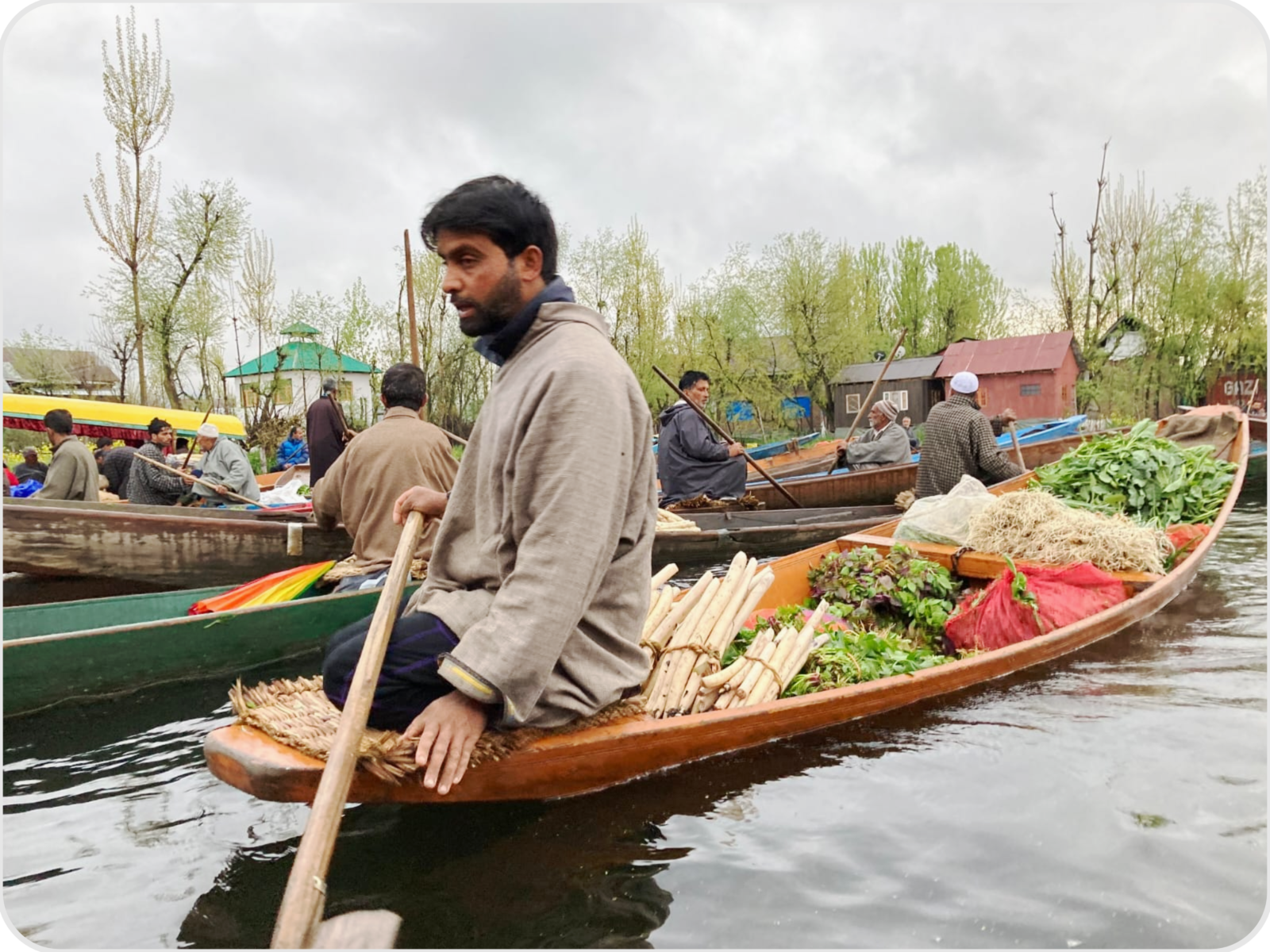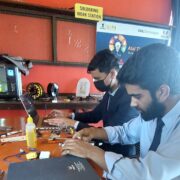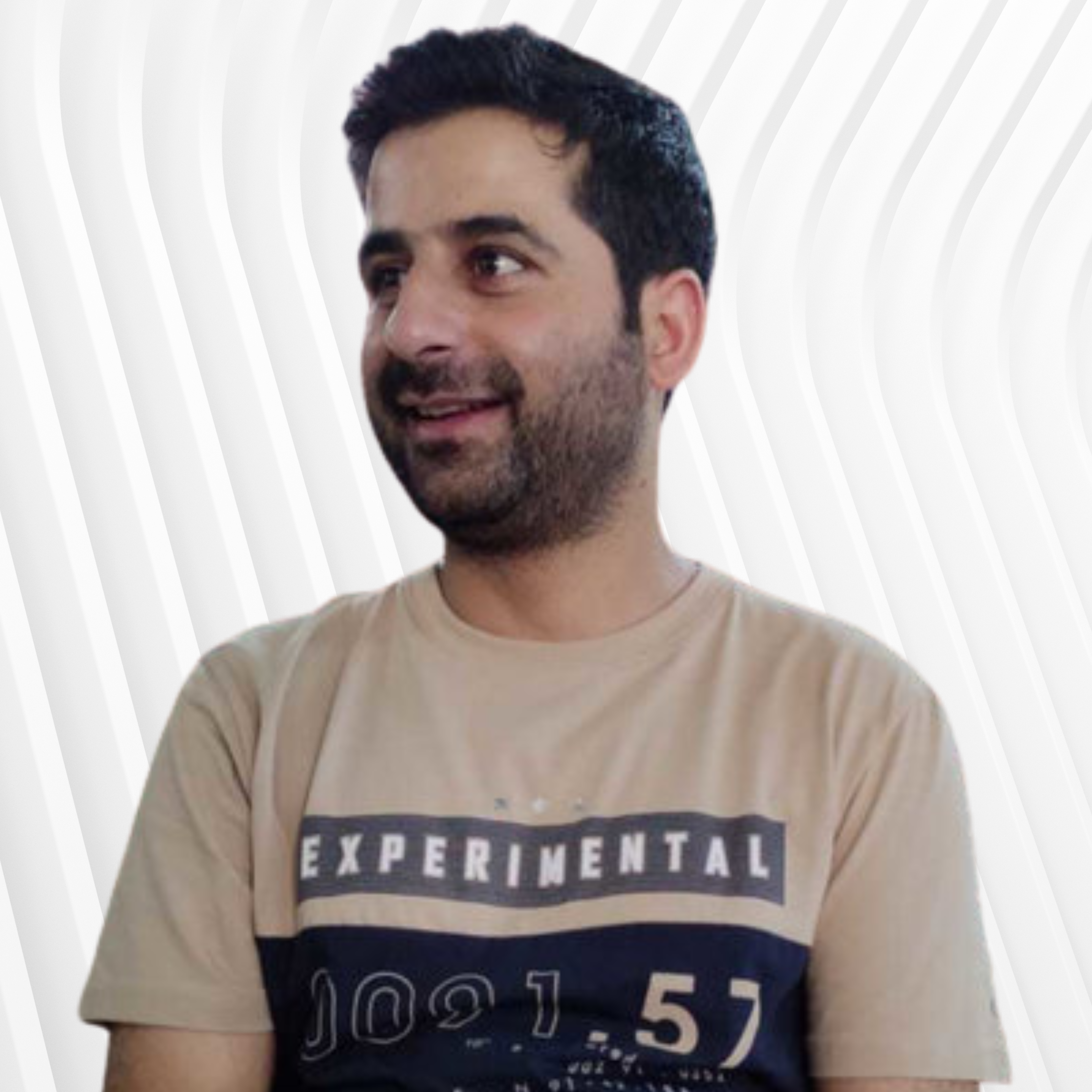Scrolls, Struggles, and Sunrise: How Kashmir is Rewriting Its Story

There was a time when Kashmir was a headline. A buzzword. A flashpoint used by talking heads and politicians far from the valley’s windswept apple orchards and snow-laced hills. It was spoken of in boardrooms, in war rooms, and in drawing rooms—anywhere but where the real people lived, where the real damage was done. But something has begun to shift, quietly but profoundly. And perhaps for the first time in decades, Kashmir is not being defined by those who seek to fragment it, but by those who have lived, endured, and are now choosing to rebuild it.
Kashmiris Are Reclaiming the Right To Live Without Fear
Information warfare, proxy militancy, online radicalization, digital misinformation—these are tools that have been used not to free Kashmir, but to fracture it.
For too long, the valley was caught in the crosshairs of two conflicting narratives. One from across the border that glorified “resistance” while funding chaos; the other, a slow, stubborn process of integration, healing, and hope. Now, the fog is lifting, and what emerges is a story the world needs to hear—not of militants and mobs, but of teachers and teenagers, of farmers and families reclaiming what was always theirs: peace, purpose, and the right to live without fear.
Over the past few months, a major digital offensive was launched—not by trolls or bots, but by the Cyber Police of Kashmir. In a sweeping crackdown that combined intelligence with technology, 200 social media accounts were identified as conduits of extremist ideology and anti-national propaganda. Of these, 100 were being operated from outside India’s borders. These weren’t just anonymous users with opinions. They were well-coordinated efforts to radicalize, misinform, and incite unrest.
“Social media has become the new battlefield,” said a senior official from the Cyber Police. “It’s no longer about who holds the ground—it’s about who controls the mind.” Several of these accounts have already been blocked. Multiple First Information Reports (FIRs) have been lodged, and legal action has commenced against major propagators. These are not mere symbolic moves—they represent the resolve of a nation that will not cede even an inch of its mindspace to manipulation.
Radicalized Youths Are Being Counselled and Rehabilitated
The outreach by the state is comprehensive and healing – it isn’t just about arresting the guilty. In a powerful counter-radicalization initiative, young people influenced by this digital hate machinery are being counselled and rehabilitated. Many, especially teenagers and young adults, were simply drawn in by emotion-laced posts and romanticized martyrdoms. Their minds, still tender and seeking meaning, were hijacked by agendas they barely understood.
Adil, a 22-year-old from Pulwama, once shared every post that blamed the state for every misfortune. “I was angry. Everything online told me I was being oppressed. That I had to resist. But no one told me how this ‘resistance’ would help my mother when she couldn’t afford medicine,” he says. It was only after intervention by local counsellors, backed by community elders and law enforcement, that he escaped from the toxic rabbit hole. Now, he runs a small mobile repair shop and dreams of expanding it into a business. “I still want freedom,” he smiles. “Freedom from poverty. From hate. From being used.”
In villages once known for stone-pelting, you now find youth centres, sports camps, and tech hubs. Former separatist strongholds like Sopore now hum with commerce and chatter.
In Baramulla, 19-year-old Sana recounts a chilling episode when her younger brother began withdrawing from the family. He was spending nights on his phone, following encrypted channels that glorified terror as valour. “It was like watching someone drown in slow motion. It was so horrifying. My brother was pulled out by people who truly cared—not from across the border, but right here.” Her brother is now in college, studying graphic design.
These are not isolated miracles. In villages once known for stone-pelting, you now find youth centres, sports camps, and tech hubs. Former separatist strongholds like Sopore now hum with commerce and chatter. Traders in Lal Chowk speak of record business. Apple growers in Shopian mention full harvests, uninterrupted by curfews. Children in Kupwara talk not of curfews but of coding bootcamps.
Attempts to Draw Invulnerable Youths
The information assault is persistent. Recent investigations unearthed the use of seemingly benign social media pages with names that want to convey brutal imagery for Kashmir. Under the veneer of activism, these pages spread dangerous half-truths and glorify terrorists as heroes. Emotional music, cropped visuals, selective outrage—all designed to keep the valley emotionally wounded and ideologically inflamed.
The information warfare is attempted to target India with bytes. But this strategy is beginning to unravel. The Jammu and Kashmir Police, backed by national intelligence, recently carried out sweeping raids across Srinagar, Anantnag, Bandipora, and Baramulla, targeting 16 high-profile separatists. Among them were names that once held sway and are now under legal scrutiny. Their palatial homes were searched, assets tracked, communications examined. For too long, they lived in plush comfort while the youths that they had radicalized bled on the streets. That chapter, too, is closing.
The Ideological Shift in Kashmir
Even more symbolic is the ideological shift underway. Two prominent organizations—J&K Tahreeqi Isteqlal and J&K Tahreek-I-Istiqamat—have publicly renounced separatism. Leaders who once called for azaadi are now advocating for democratic engagement within the Indian framework. This isn’t surrender—it is transformation. It is proof that when lies are stripped away, truth takes root.
Perhaps the most convincing evidence of change isn’t found in courtrooms or press conferences. It lies in the quiet dignity of people like Basharat Wani, an apple farmer in Kulgam, who beams with pride as traders from Mumbai arrive at his orchard to negotiate prices. “This is the freedom I prayed for,” he says. “To live, to grow, to not look over my shoulder every time a scooter backfires.”
Or in Iqra Bashir, a teacher in Shopian, who says her students now come to school not out of obligation, but excitement. “They talk about science, space, cricket. They don’t discuss shutdowns, propaganda or misleading videos.” It is in mothers who sleep through the night without waiting for the knock of security forces. In fathers who plan weddings, not funerals.
Social media has become the new battlefield,” said a senior official from the Cyber Police. “It’s no longer about who holds the ground—it’s about who controls the mind.”
Kashmiris Are Choosing a Better Future
The enemy narrative is failing not because India is winning a war—but because Kashmiris are choosing a better future. A future where dissent is voiced through debate, not grenades. Where grief finds therapy, not triggers. Where identity is not tied to pain, but possibility.
The international community is beginning to take note. Once sympathetic voices are now sceptical. They see India investing in roads, universities, and hospitals – things which hold value for the Kashmiris and give them a good life. The people of Kashmir are making their choice. They are choosing life.
As the sun climbs above the Pir Panjal range, it casts its light not just on a beautiful valley, but on a people rediscovering their strength. From Sopore’s market lanes to Gulmarg’s ski slopes, from Anantnag’s farms to Srinagar’s university halls—the valley is stirring. It is rising from the shadows, not as a victim or a pawn, but as a voice.
Kashmir is not just surviving. It is healing. It is thinking. And for the first time in a long time, it is dreaming its own dreams.
Dr Syed Eesar Mehdi is a Research Fellow at International Centre for Peace Studies, New Delhi, India. The views expressed here are his own. He can be reached @ eesar.mehdi@gmail.com






